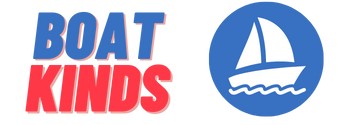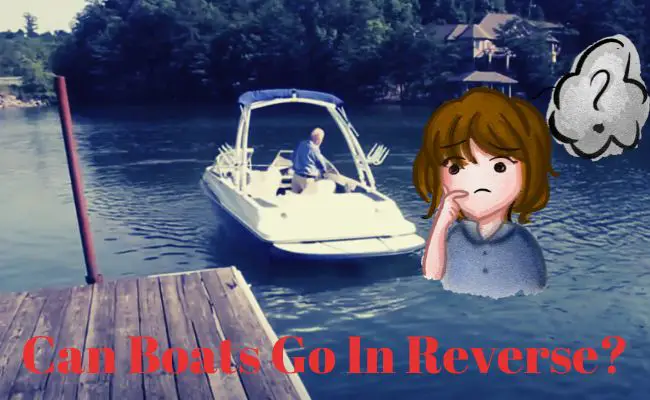Can Boats Go In Reverse? Yes. Reversible propeller Airboats can go in reverse and RC boats with a reverse rudder can go in reverse. RC boats that have a left-handed propeller and reverse rudder can also go in reverse. We’ll look at how boats can move in reverse and answer some of your questions.
Airboats with a Reversible Propeller Can Move in Reverse
Although airboats with reversible propellers may seem convenient, this feature has some drawbacks and can even sink the boat. Luckily, there are other options, such as using them on land or in shallow water. Here’s what you need to know before buying one. Reversible propellers help airboats move in reverse by changing the airflow behind the boat to the front.
Unlike other watercraft, airboats can move in reverse because they can be made to have reversible propellers. The reversible propellers help them move in reverse when they need to. They function like rudders, but they work only when air is pushed away from the boat. In reverse, separate rudders would be necessary to redirect the air.
What Makes a Boat Go in Reverse?
To understand why a boat might go in reverse, you must first understand the reason for a walk. The asymmetrical thrust of a boat’s prop is responsible for the walk, which tends to push the stern sideways. Next, you must observe the prop wash, or wave pattern, on the water’s surface. These three components work together to make a boat go in reverse.
Prop’s Tendency to Push a Boat’s Stern Sideways
Prop walk is a natural phenomenon caused by a boat’s propeller. The direction that the propeller spins will determine the sideways force the prop exerts on the boat’s stern. Prop walk is more pronounced on inboard vessels and in reverse gear. In forward gear, the right-hand propeller will rotate clockwise and the left-hand propeller will spin counter-clockwise.
This problem is most prevalent on single-engine boats, especially small ones. Some boats are designed to combat this issue with hydraulic steering. However, hydraulic steering doesn’t allow the propeller to turn very much. In a situation like this, the propeller force will try to turn the engine in the same direction as the propeller is spinning. To compensate for the asymmetric thrust, you’ll need to steer your boat in the opposite direction to correct the sideways veering.
Prop’s Asymmetrical Blade thrust
A boat’s asymmetrical blade thrust is what drives the stern. The thrust produced by the propeller is caused by low pressure on the leading side of the blades, which pulls the boat forward. Acupillo and raked blade shapes are efficient for forwarding thrust, but not so effective for backward thrust. Propellers with asymmetrical blades are better for reverse thrust.
A right-handed fixed propeller pushes the stern to starboard when going forward, and the stern to port when in reverse. This effect is known as prop walk and is a sign of a poorly balanced propeller. The stern of a boat going in reverse acts like a shopping trolley being pulled backward. The rudder location is very important in reverse since small wheel movements can cause a significant course change.
Can You Steer a Boat in Reverse?
Can you steer a boat in reverse? Yes, you will have to get used to pulling the boat back with the engine. It will be stronger than you think, so make sure to use minor adjustments and pause when you reach neutral. Likewise, when in an emergency, you should pause after the engine reaches a neutral position. Here are some tips to steer a boat in reverse:
Prop Torque
If you’ve ever tried steering a boat in reverse, you know how difficult it can be. You might even have tried steering the boat by using the steering wheel. In either case, you’ll find the boat sideways and have a difficult time backing into your slip. Instead, use the prop torque to move the stern towards the port. Afterward, shift the boat into forward or neutral and use the prop torque to induce a starboard slide.
Prop Walk
If you’re trying to learn how to steer a boat in reverse, you’ve probably noticed that the props tend to walk. Prop walk is the result of a lack of speed, which will cause the boat to walk. It’s best to gain some speed before shifting into reverse, otherwise, the boat won’t turn like a car without speed.
How Do You Shift a Boat in Reverse?
To know how to shift a boat in reverse, you will need to lift the Shift Locking Mechanism. This mechanism is located on the back of the boat and must be lifted to initiate the shifting process. You should not shift past the forward DETENT without lifting the Shift Locking Mechanism first. Doing so will accelerate the boat. Avoid throttling while tied to the dock. Practice only shifting the boat to the initial DETENT position.
Can a Ship Drive Backwards?
When a ship is moving, is it possible to reverse its direction? The answer to this question depends on the ship’s design. Some ships have turboelectric drive systems, which give them a maneuvering bonus, but they are unable to move backward. Alternatively, some ships use harpoons to slow down and reverse. However, reversing a ship would be extremely risky.
While not always necessary, a ship’s propelling system can be used to reverse its direction of motion. Astern propulsion, for instance, involves developing thrust in a retrograde direction.
This does not mean that the ship is moving astern; it simply slows down by applying force in the bow direction. Similarly, thrust reversal is an airplane-equivalent concept. However, this technique must be carried out carefully and only when the ship is already in motion.
Another method of reversing a ship’s direction is with propellers. These propellers use the power from the main engine to cut the water and impart an equal force in the opposite direction.
This action is a result of Newton’s third law of motion. Ships can only move forward in one direction and must slow down before going into reverse. This is why rudders are important, but can’t provide quick maneuverability in shallow water.
In addition, bow thrusters are an excellent way to maneuver in shallow water. The reverse thrust, in turn, slows down or stops the ship in reverse. Like brakes in cars, reverse thrust can also be used to slow the ship down and stop it.


